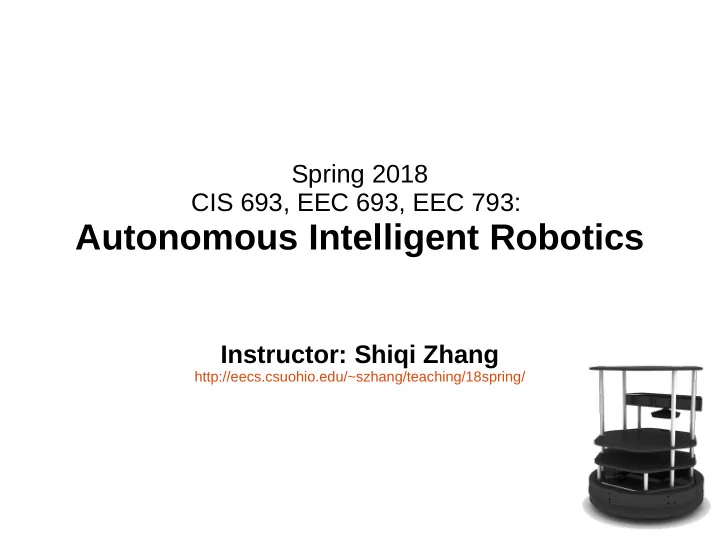

Spring 2018 CIS 693, EEC 693, EEC 793: Autonomous Intelligent Robotics Instructor: Shiqi Zhang http://eecs.csuohio.edu/~szhang/teaching/18spring/
Robot localization ● Where am I? ● Given a map, determine the robot’s location ● Landmark locations are known, but the robot’s position is not ● Robot localization (or more generally, robot state estimation) is a fundamental problem
Problems of robot localization ● Type 1: – Without moving around, answer the question of where you are ● Type 2: – Given an initial position, track the robot’s position while moving ● Type 3 – Combines the above problems. Also called “Kidnapped robot problem”
Bayesian filter ● Estimate state x from data d – What is the probability of the robot being at x? ● x could be robot location, map information, locations of targets, etc… ● d could be sensor readings such as range, actions, odometry from encoders, etc… ● This is a general formalism that does not depend on the particular probability representation ● Bayes filter recursively computes the posterior distribution: Bel ( x ) P ( x | Z ) = T T T
Localization Initial state detects nothing: Moves and detects landmark: Moves and detects nothing: Moves and detects landmark:
Bayesian Filter : Requirements for Implementation ● Representation for the belief function ● Update equations ● Motion model ● Sensor model ● Initial belief state
Popular methods ● Kalman filter ● Particle filter y mx b = + ( x , y ), ( x , y ), ( x , y ),...( x n y , ) 1 1 2 2 3 3 n
Monte carlo localization: Efficient position estimation for mobile robots. AAAI, 1999 Fox, D., Burgard, W., Dellaert, F., & Thrun, S. (1999). Classic paper award at AAAI’17
The Monte-Carlo localization paper was part of the MINERVA project (summer 1998) Youtube link of the museum tour-guide robot in MINERVA: https://youtu.be/NOhcQCy1Kxs
Particle filter: the algorithm
Recommend
More recommend